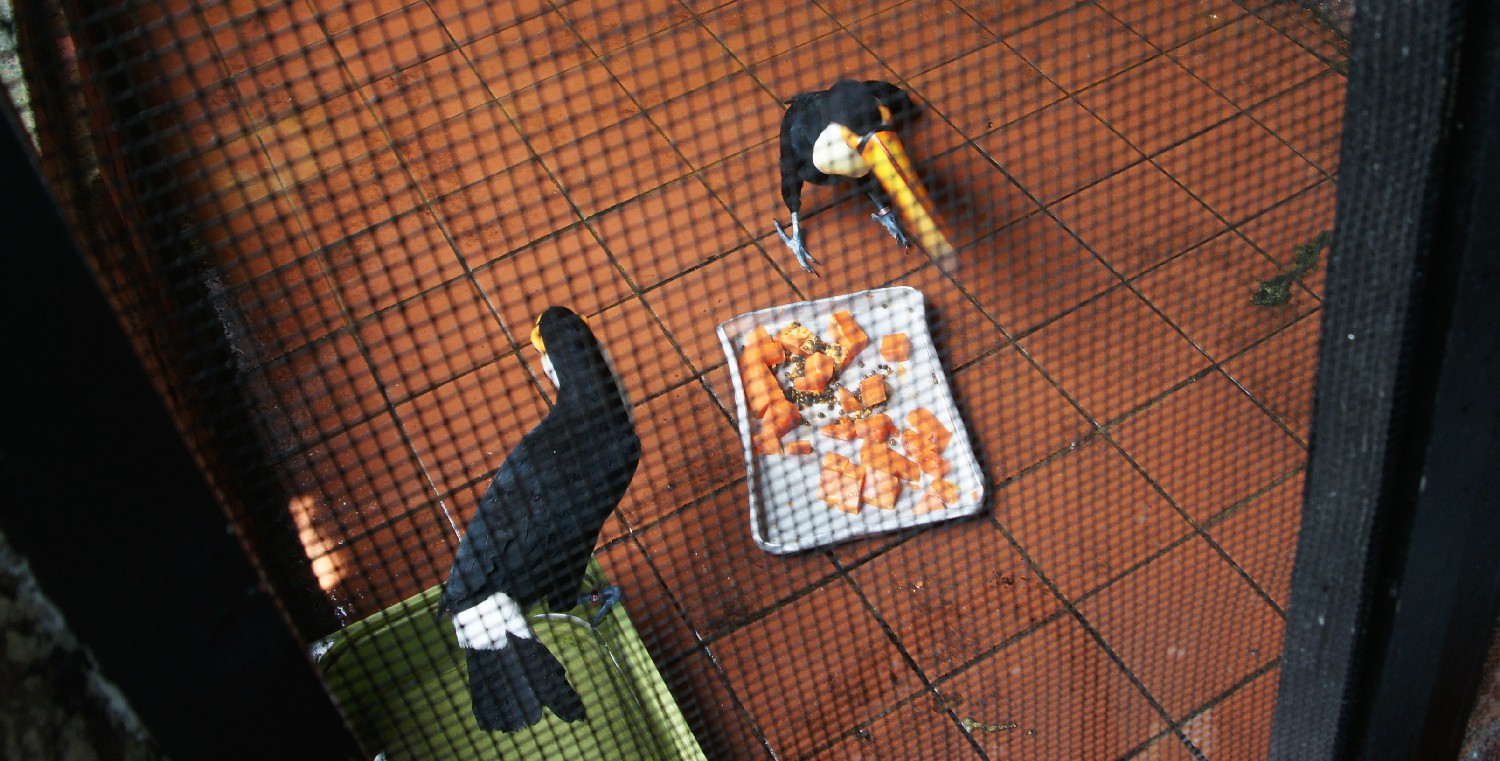In general, these are the factors of blurring out the bars:
- move close up
- have a strong zoom
- have a large aperture
You can calculate the impact of different settings here..
If the image above is your real-life situation, this will be very very difficult. Why? Chances are that bird in the cage will be so far away that the depth of field on the distance will not be able to blur out the cage bars sufficiently to make them disappear 100%. Your only hope is that the wire on the cages is very thin and that you get a better angle to shoot (=closer up) as well as the bird sitting ideally on the other end of the cage.
Why? The bird has to be possibly far away from the cage to have the DOF make it disappear. The cage is far away, your zoom lens has limited aperture and the angle to the cage forces you to move far away. All 3 factors lower your chances.
Here is an example with a couple of generous assumptions:
Let's assume the cage is 20 cm in diameter. Also, the cages are about at 6 meters height. Let's also assume that you will have ideal conditions to use a F/4 aperture. But how far will you have to be away from the cage? Well to even look into the cage and see the bird on the other side, you will have to see it from almost straight ahead. Let's be again positive and assume a 27 degree angle from the bottom would work. That means you have to have twice the distance on the ground than the cage is high = 12 meters. Assuming the bird is not blocked by the bottom of the cage. The DOF then would be still 24cm - 4 cm of DOF, which is not enough to make the bars disappear completely, since the bird will most likely sit in the center of the cage. With a 24 cm depth of field, your whole cage will be in focus - all bars included. If you need to move further away, the problem becomes worse. Same if there is not enough light or your shutter speed (300mm needs a certain speed to not blur from shake, and the bird might be moving) needs to be too high to get the bird sharp.






